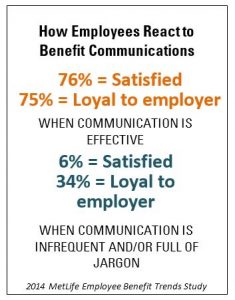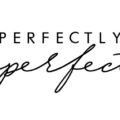5 Ways to Improve Your Benefits Program-Without Changing It
By Lisa Hughes Daniel, Guest Blogger
It’s a competitive hiring environment, and employee engagement and retention are more important than ever. Losing employees because they’re searching for greener pastures isn’t good for your company’s bottom line or its overall health. But when workers don’t feel a strong connection to an employer, jobs become interchangeable. So, what can your company do to combat this trend and hang onto its people?
Ideally, it might be to ramp up your benefits packages. But, that’s not always feasible. Here’s some good news: You can improve engagement with your employees just by doing a better job of communicating about the benefits you already offer.
The communication gap…
Benefits are critical to employees because they deal with key life challenges, like staying healthy, paying for health care, saving for retirement, and taking paid time off. Partly for that reason, benefits decisions can create stress and uncertainty. The stakes are high, and materials are often confusing. Consider:
- Half of employees say they don’t understand their insurance benefits.
- One-third say they don’t feel confident in the choices they made at their last enrollment.
- 65% of Americans who make benefit decisions don’t understand how an HSA works, and only 25% who have access to an HSA are using one.
- Only 1 in 5 employees thinks their employer communicates effectively about benefits.[1]
It’s also important to remember that people deal with benefits-related stress all year round, not just at enrollment time.
Back to the good news…
American workers tend to rely on their employers for guidance and help. Which means your company can turn confusion and frustration into greater satisfaction and loyalty—just by making benefits easier to access and understand.
To that end, here are those five tips:
- Think like a regular Jane or Joe, not a Benefits expert, when designing your outreach. Hold the jargon. Consider the avalanche of information people deal with every day and try to be clear, concise, and action-oriented.
- Communicate year-round. Think beyond enrollment and reach out when your employees could use tips or reminders—for example, before flex dollars expire, at tax time, or for occasional check-ins on physical and financial wellness. Be a proactive resource during every season.
- Customize when you can. Do all your employees have the same benefits questions and concerns? Probably not. Try to tailor messages—and even the way you communicate—to the needs of different ages and categories of workers.
- Offer decision support tools. Online calculators and software for comparing plan types—especially the amount of money a person might spend in different insurance scenarios—can be invaluable for employees wading through decisions.
- Make it a little fun. To get people engaged, try some humor or playfulness in posters or emails. Offer some unique prizes or incentives to those who try new resources. Remember that a human touch can go a long way toward building a connection with your workforce.
About the Guest Blogger:
Lisa Hughes Daniel is the Owner and Founder of Rolling Field Communications. For more information about her company, go to www.rollingfield.net. She can be reached directly at https://www.linkedin.com/in/lisa-hughes-daniel
[1] 2017 Jellyvision survey; 2017 Aflac Workforces Report; Fidelity; 2019 Segal Benz white paper.






